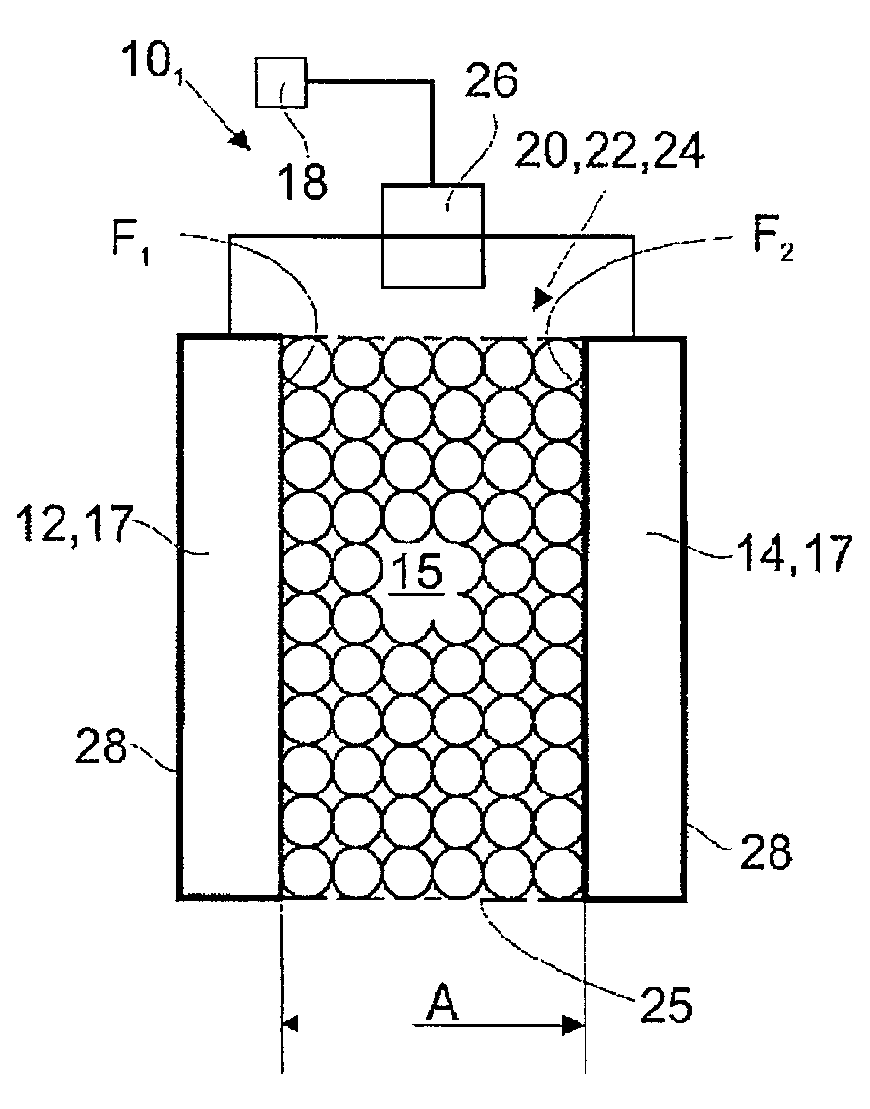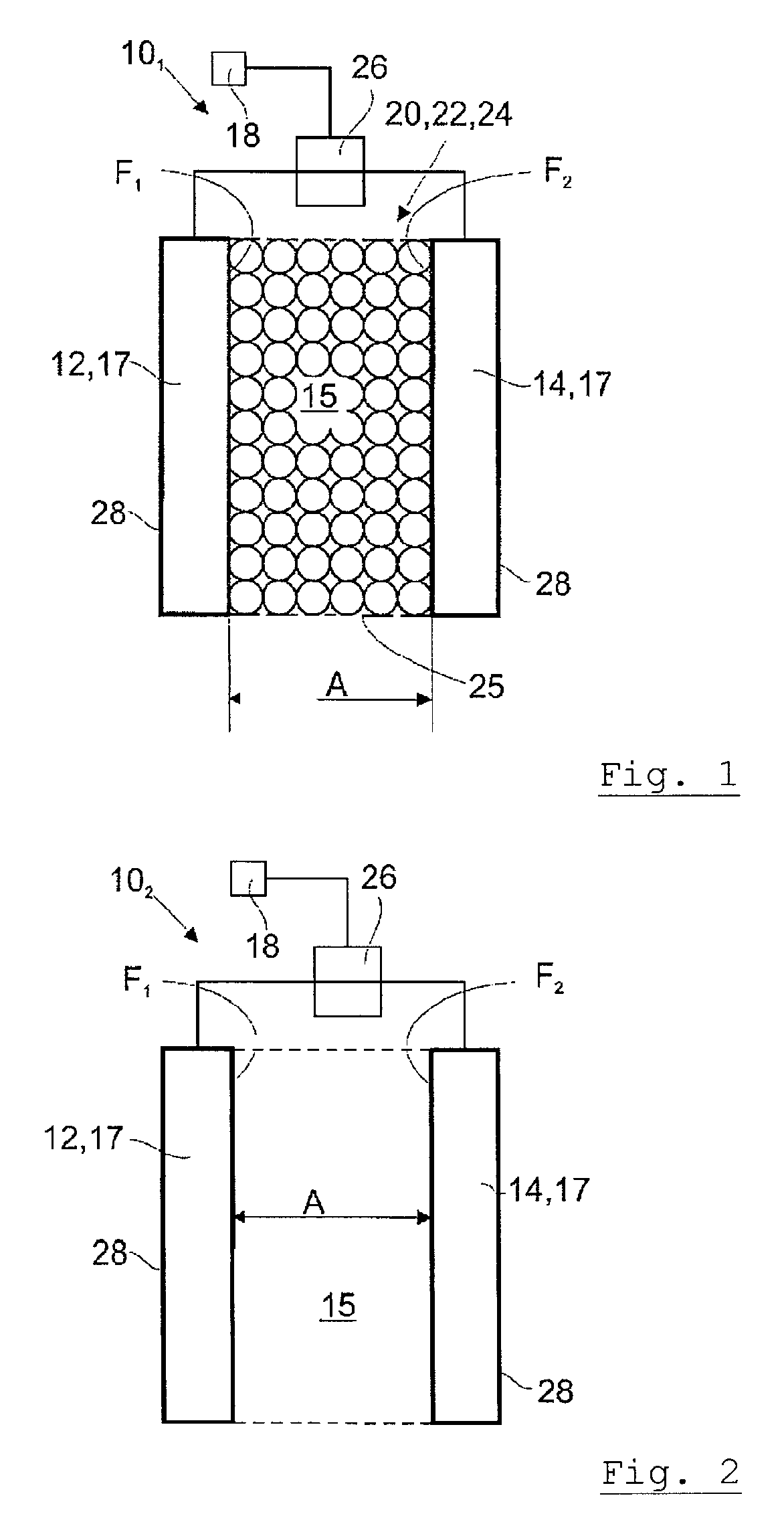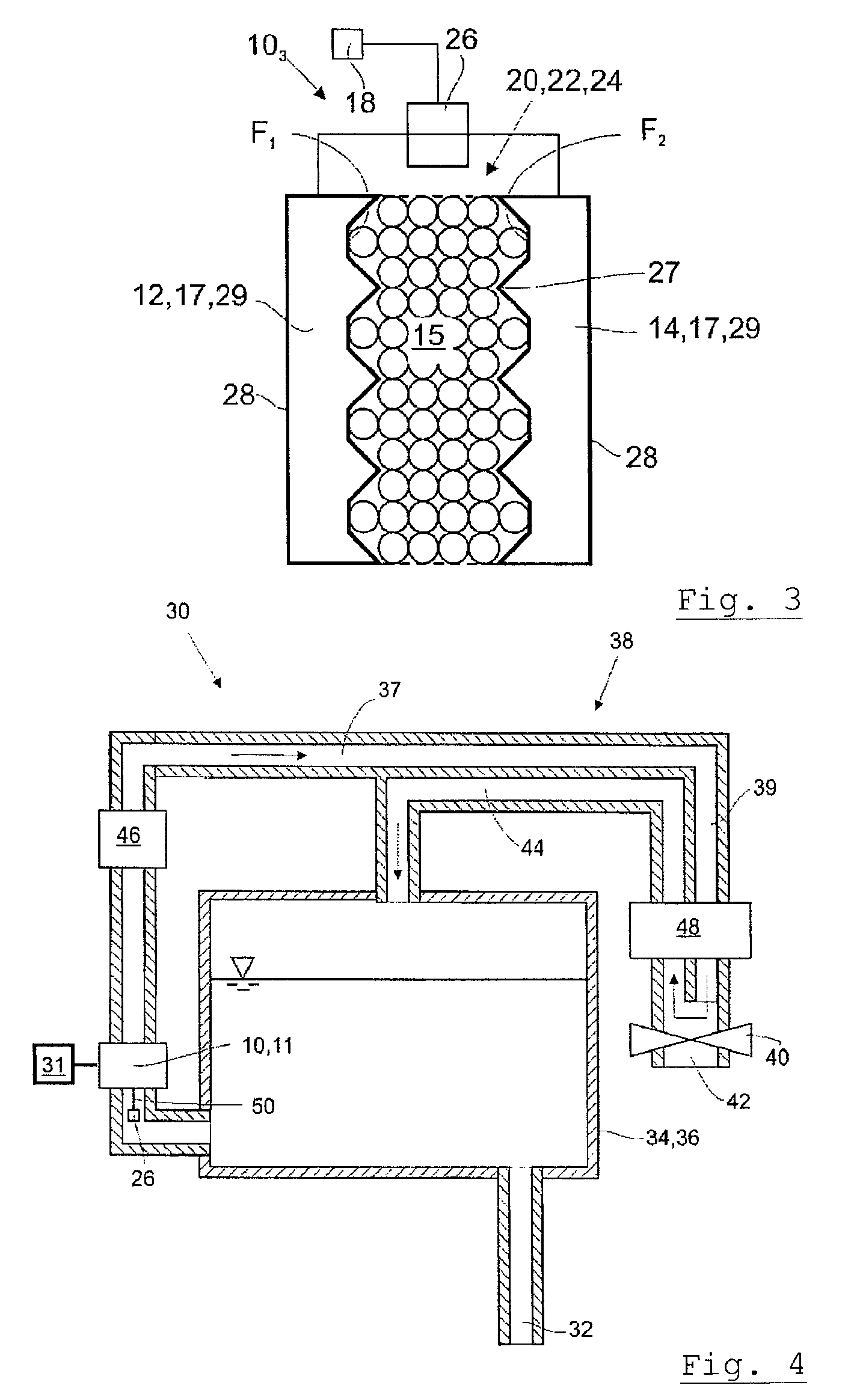Electrolysis cell for generating ozone for treating a liquid
- Summary
- Abstract
- Description
- Claims
- Application Information
AI Technical Summary
Benefits of technology
Problems solved by technology
Method used
Image
Examples
Embodiment Construction
[0087]The electrolysis cell 101 depicted in FIG. 1 comprises a first electrode 12 having a first surface F1 and a second electrode 14 having a second surface F2, which face one another and are arranged at a distance A to one another. The electrodes 12,14 each have a support core 17 to which a diamond coating 28 has been applied. To be able to make the diamond coating 28 electrically conductive, it is doped. Furthermore, the electrolysis cell 10 comprises a measurement device 26 to determine the cell resistance and to activate the electrolysis cell 10 in dependence on a determinable event. The measurement device 26 is connected to a power supply 18 for controlling the voltage as a function of the measured cell resistance.
[0088]The two electrodes 12,14 form a free space 15 through which liquid, for example water, can flow, and which is filled with a particulate solid-state electrolyte 20, which may be an ion exchanger 22 or a zeolite 24 that has been made acidic or a polymer 24. As po...
PUM
| Property | Measurement | Unit |
|---|---|---|
| Electrical conductivity | aaaaa | aaaaa |
| Polarity | aaaaa | aaaaa |
| Concentration | aaaaa | aaaaa |
Abstract
Description
Claims
Application Information
 Login to View More
Login to View More - R&D
- Intellectual Property
- Life Sciences
- Materials
- Tech Scout
- Unparalleled Data Quality
- Higher Quality Content
- 60% Fewer Hallucinations
Browse by: Latest US Patents, China's latest patents, Technical Efficacy Thesaurus, Application Domain, Technology Topic, Popular Technical Reports.
© 2025 PatSnap. All rights reserved.Legal|Privacy policy|Modern Slavery Act Transparency Statement|Sitemap|About US| Contact US: help@patsnap.com



